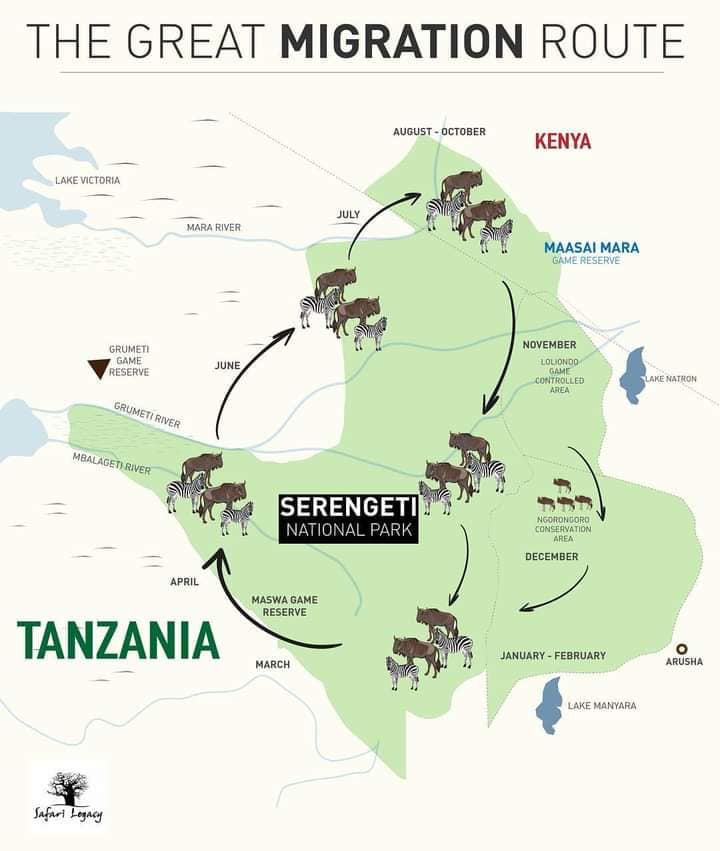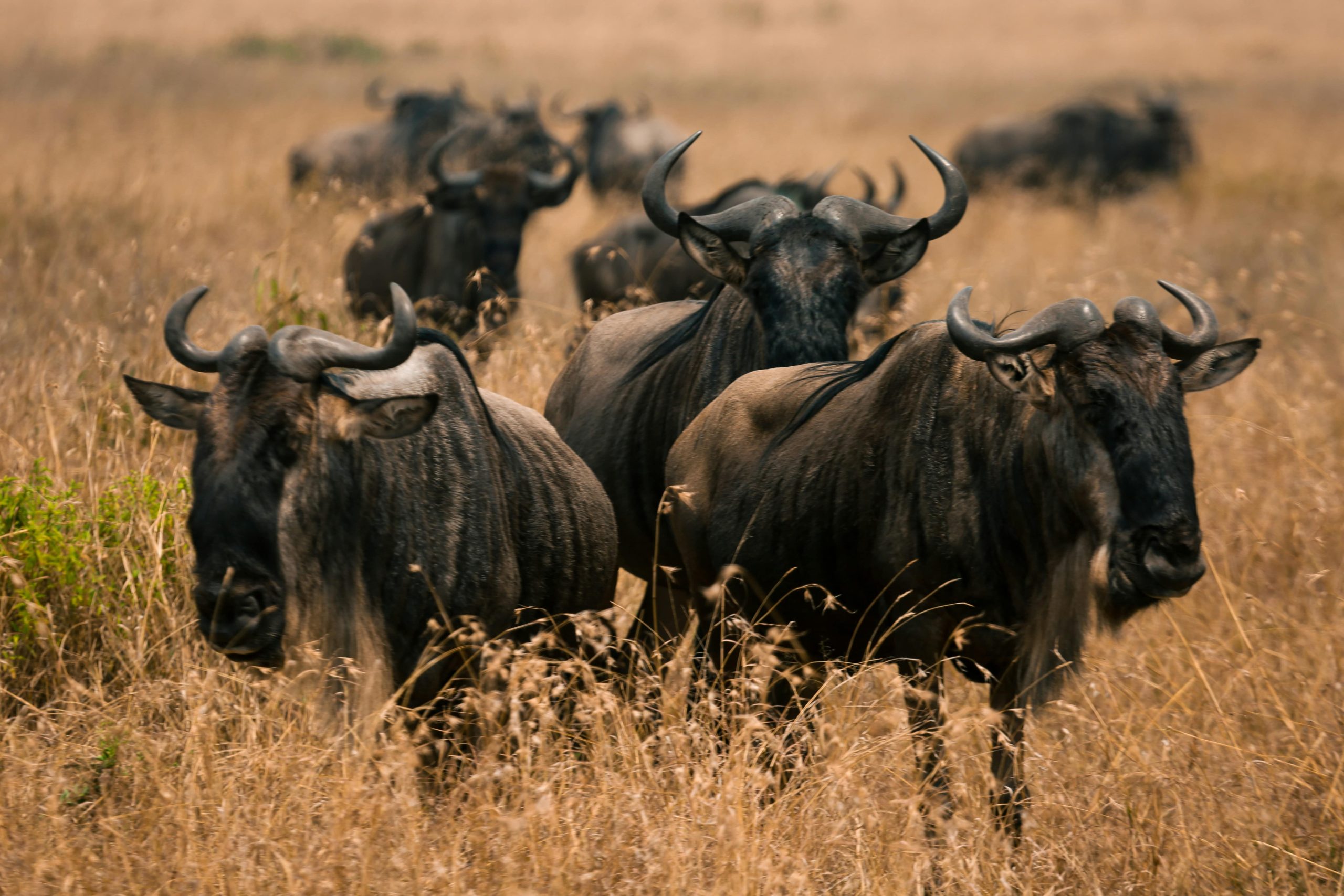Why wildebeest migrate-operator journal: Discover why over a million wildebeest embark on an 1,800-mile journey—insider insights, timing, best viewing spots, gear tips, and conservation impact from a safari operator’s journal.
Every year, over a million wildebeest set off on an 1,800-mile odyssey across Tanzania and Kenya—driven by rain-fed pastures and the imperative to protect their calves. In this journal, you’ll get an insider’s view of what it really takes to track, guide, and safeguard the herd, plus all the practical tips you need to turn this natural wonder into your next safari adventure.

At a Glance
Wildebeest migrate to follow seasonal rains that replenish grazing grounds, avoid predators during calving, and sustain the savannah ecosystem.
Why wildebeest migrate-operator journal
1. Why Do Wildebeest Migrate?
Why Do Wildebeest Migrate?
The great migration is nature’s cycle of life—wildebeest follow the rains to fresh grass, give birth in safer areas, and ensure calves have the best start.
- Seasonal Rains & Greener Pastures: As rains move north from the Serengeti to the Masai Mara, so do the wildebeest.
- Calving Safety: By synchronizing births on the southern plains (Dec–Mar), calves face fewer predators thanks to sheer herd numbers.
- Ecosystem Balance: Their grazing rejuvenates grasslands and supports a host of other wildlife.
2. Where and When Does the Migration Happen?
Where and When Does the Migration Happen?
The migration loops annually through key regions on a roughly 10–12-month cycle:
| Months | Location | Highlight |
|---|---|---|
| Dec–Mar | Southern Serengeti | Calving season on open plains |
| Apr–Jun | Western Grumeti | River crossings & predator hunts |
| Jul–Aug | Northern Serengeti & Masai Mara | Mara River crossings |
| Sep–Nov | Southern Serengeti | Herd gathers before next cycle |

A simple graphic tracing this loop from the Serengeti’s southern plains, up through Grumeti, across the Mara River, and back again.
3. How Safari Operators Track and Protect the Herd
How Safari Operators Track and Protect the Herd
Behind every successful migration safari is a network of technology, teamwork, and quick thinking.
- GPS Collars & Satellite Monitoring
We place collars on key individuals to predict herd movements days in advance. - Drone Scouting for Real-Time Updates
Drones give us aerial views when terrain or weather hides crossings from ground teams. - Ranger Coordination
Local rangers radio us sightings and potential hazards, ensuring both the herd’s safety and our guests’.
Anecdote: Last season, our drone spotted a hermit stream rerouting the herd’s path. We diverted our vehicles in 15 minutes—guests witnessed one of the season’s largest crossing without crowding or delay.
4. Where’s the Best Place to See the River Crossings?
Where’s the Best Place to See the River Crossings?
- Serengeti North Banks (Late July)
- Fewer vehicles; spectacular sunrise crossings.
- Mara River, Kenya Side (Early August)
- Larger crowds but higher chance of mass crossings.
- Grumeti River, Tanzania (May–June)
- Quieter riverside spots with dramatic predator encounters.
Insider Tip: A sunrise boat trip on the Mara River offers unmatched angles and photo opportunities—just be sure your guide has the required boat permit.
5. What Do You Need to Join the Migration Safari?
What Do You Need to Join the Migration Safari?
- Permit Costs & Booking Window
- Tanzania Park Fees: ~USD 60/day (book 3–6 months ahead)
- Kenya Park Fees: ~USD 70/day (book 2–4 months ahead)
- Packing Checklist
- Sturdy walking boots & waterproof jacket
- Telephoto lens (200 mm+ recommended)
- Binoculars & wildlife field guide
- Sunhat, sunscreen, and reusable water bottle
Pro Tip: Reserve your permits as soon as dates are confirmed—it’s the single easiest way to secure prime river-crossing days.
6. How Does the Migration Benefit Local Ecosystems and Communities?
How Does the Migration Benefit Local Ecosystems and Communities?
- Grassland Rejuvenation: Grazing and hoof action spur new grass growth, supporting herbivores year-round.
- Predator–Prey Balance: A moving feast for lions, crocodiles, and hyenas—maintaining healthy predator populations.
- Community Tourism Revenue: Maasai and local lodges thrive on park fees and guest purchases, funding schools and healthcare.
Give Back: Ask your operator about optional “Community Day” visits, where you can contribute directly to local conservation initiatives.
7. How to Capture the Migration Like a Pro
How to Capture the Migration Like a Pro
- Camera Settings:
- Shutter Speed: 1/1,000 s or faster for river crossings.
- Aperture: f/5.6–f/8 for sharp herd and background detail.
- Framing:
- Use wide-angle to show scale; switch to telephoto for action shots.
- Safety & Storytelling:
- Always stay with your guide when approaching water edges.
- Sequence your shots: first herd approach, mid-crossing struggle, final run to shore.
Conclusion & Call to Action
From the thunder of thousands crossing the Mara to the hush of sunrise on the southern plains, the great wildebeest migration is the world’s most epic wildlife drama. Armed with these insider insights, you’re ready to experience—and photograph—every thrilling moment.
Ready for an insider’s journey?
Inquire now about our customized “Operator’s Journal” safaris and be among the few who witness the migration from the front row.
Contact Us » • +256 754 944397 • bookings@agasarosafaris.com
Frequently Asked Questions
Why do wildebeest migrate every year?
They follow the rains for fresh grazing and safer calving grounds—nature’s blueprint for herd survival.
When is the best time to see the river crossings?
Late July to early August, when the largest sections of the herd move north across the Mara River.
How long does the full migration cycle last?
Approximately 10–12 months, looping between Tanzania’s Serengeti and Kenya’s Masai Mara.
What permits are required for a migration safari?
Standard park-entry fees for Tanzania and Kenya, plus a licensed guide—no special “migration” permit needed.
How do operators keep travelers safe during river crossings?
Through elevated boat platforms, real-time drone scouting, and close coordination with local rangers.
Can I customize an operator’s “behind-the-scenes” migration tour?
Absolutely—options include private vehicles, extended tracking days, and multi-week “follow-the-herd” itineraries.
What’s the average cost of a migration-focused safari?
From USD 2,500 per person for a 5-day small-group journey (inclusive of park fees, accommodation, and guides).
